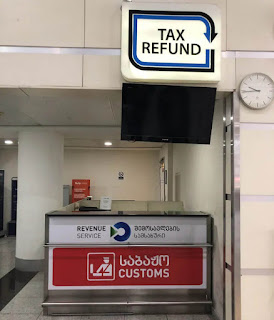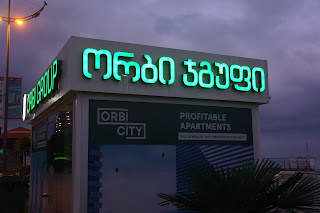Pirate Books: Lonely Planet Cambodia (2007 Enhanced Edition)
This Enhanced Edition is a lonely planet parody that is better than the original. The printed book was for sale in Cambodia.

Last time we wrote about travel books. There is one must-read we want to add to the list of our favourites together with Hokkaido Highway Blues and Molvanîa Travel Guide. It is the Lonely Planet of Cambodia, this year’s updated edition. It includes some indispensable, previously unheard of practical tips, and new, exciting places. You simply cannot experience Cambodia fully without this excellent, fixed guide book.
Pirate books, such as this one, are readily available in Cambodia. In fact, most of the books are copies sold at reasonable prices. You can buy books from any tourist restaurant where young booksellers cruise with their baskets. Bookshops offer a wider selection, but it is useful to keep in mind that not all of the books with English titles are in English. For Cambodians, it seems to be trendy to have a foreign title together with Khmer content. Western, imported books cost dearly, often over ten times more than pirate books.
There are not too many libraries in Cambodia that have foreign books, but Open Book reading room offers a variety of English and French books to read on-site or for borrowing in Phnom Penh (41EO Street 240, between Norodom Boulevard and the Royal Palace, e-mail openbook240 [at] yahoo.com). Open Book is maintained by an association aiming to promote reading especially to kids. A usual sight in the reading room is a dozen of kids playing on the floor covered with cushions. Getting a library card is a bit pricey, 15 dollars, but all of the books can also be read in the reading room itself. The reading room is open daily from 10 am until 5 pm.
Lonely Planet
In general, Lonely Planet guides are at their best when you check out the most recommended hotels, restaurants, and services, and then avoid them like the plague. All the recommended places and sites we have checked have had huge price hikes recently not to mention the service that suffers from serious attitude problems. There is overcharging, short-changing and arrogance. The LP recommendation seems to work everywhere in the world like a kiss of death. The following story is a pleasant and refreshing exception. We now let the book speak for itself. The first text below is about interacting with Cambodian people, “Hug ’em like Angelina”, and the second about a newly discovered village of Krang, “a trophy desired by every adventure traveller in Cambodia” as the book describes it. It´s almost as crazy as Molvania. Enjoy!
Hug ’em like Angelina
“There’s nothing like hugging poor people. Let’s face it—Khmer Rouge, poverty, and all, Cambodians are quite a miserable lot. You can make up for the injustices of history by walking up to them and hugging them, allowing yourself to be penetrated by the unmistakable warmth of the satisfied vanity. Angelina does it and we all know Angelina is wonderful.”
Upon arriving in Cambodia you must buy a fashionable Mao hat and a red khroma which you can wrap around your neck like a local. You can then roam about the country with a grave face, blending in and lamenting the sufferings caused by the Khmer Rouge 30 years ago. There’s a hope though—in spite of all the sufferings Cambodian children do smile.” (Lonely Planet 2007, Enhanced Edition, p. 43.)
Krang and Phnum Chi
“Discovered by a group of New Zealand hikers in 2004, the wild village of Krang and the fascinating surroundings have already become the trophy desired by every adventure traveller to Cambodia. Krang and Phnum Chi are only for the very adventurous and indeed no place of comfort. But for those seeking adventure and the chance to feel like real explorers in a profoundly exotic world it’s the place to go. (--) Untouched by modern religions, the people around Phnom Chi have fused Angkorean theocracy with mysterious totemic beliefs and anthropomorphic deities. In the local pantheon the most powerful of spirits is the Tiger-God and legend has it that in every generation one man in the village must walk up Phnom Chi mountain in the company of a tiger to secure the well-being of this generation. In bad years, a woman is chose to kiss a King Cobra at he end of the rainy season secure protection for the village. Although locals may invite you to try, don’t do it—please see highlighted box.”
“It’s in your mask Krang Maiden carve beautiful masks to describe the features of the man they want to marry. The spirits then bring this man to them. This is a serious affair and these masks are objects of cult. As much as you would like one a souvenir please do not help yourself from the wall of the caves on the mountain.”
“A short walk around the village is a very rewarding experience with locals inviting you for tea or sharing with you a glass of kahiap—a fearsome concoction made out of elephant milk and palm oil. Drink up without blinking as Krang people take offences seriously. Children will follow you smiling and running around—as elsewhere in Cambodia, children are smiling and they love a good trick. Watch the sun setting over the Phnum Chi mountain before indulging in a unique feast with the fun loving Krang people.”
Hiking
“Hiking around Phnom Chi is not for softies. Try to make arrangements beforehand and secure a guide from the village. Some of the children are excellent guides and given their reduced needs make also for a bargain. Approach the mountain from the west and stay on the path at all times. Hiking p the mountain is a whole day affair and visitors have been known for also spending the night at the top, camping. Prepare well and carry provisions. Just before you reach the top look to your left and you will notice the entrance to the cave. This is the cave where totems made out of precious stones have been buried for centuries and where maidens from the village still come and hang the masks of their beloved. If you do enter the cave, keep respectful as this is a holy place for the Krang.”
Sleeping
“If sleeping in a hammock is not your thing, The Dreamtiger is the only place resembling a guesthouse in Krang. The very basic facilities are however not the main reason to stay there—the main reason is Prak, the owner, Bigger than life and a gifted story teller, Prak has learned his English working with the UNTAC in the early 90’s. A defeated Khmer Rouge soldier who took refuge in Krang sometime in the 80’s, Prak is a local activist and played a key role in demining the area around the village. On the wall behind him is a decoration received personally by the king and he’ll gladly tell you how he married a Krang woman who recognized him from her mask by the fierce scar on his left cheek and the ritual battle tattoos on his neck and chest. If the Dreamtiger is full, you have to go local: put your hammock under any house in the village and Krank people will be honoured to host you. Alternatively you can bargain with the locals for a place in their chamkas.”
Eating
“Combining mysterious ingredients with exotic herbs, Krangs have some of the most sophisticated food in rural Cambodia. Meat choices include dog, snake or wild boar. The less adventurous will have to go by with rice or porridge. Eat anywhere on the side of the road or accept an invitation from a villager. Do not offend your host by offering money. You are expected to leave a gift at the entrance, after picking up your shoes.”
Getting there and away
“You’ll need to organize a cross country motorbike or a jeep in Kompong Thom. Carry a compass and a mind for adventure. Like elsewhere in Cambodia, the road is nothing for inexperienced riders. Stay on the beaten path and do not venture off-road as there are still landmines in the area. From Kompong Thom drive north on road 64 you have two options of turning right heading east for the mountains. The first option is road 220 heading west in the village of Chey. This road will also bring you past a beautiful Temple—Samboour Prey Kuk. After Sampoy you need to watch out for a small dirt road turning right. Keep this road for about 66 km until the village of Svay Pak. From there you’ll have 20 km of rough road through jungle heading due west to Krang. You’ll know you’re on the right road when you’ll see the majestic Phnom Chi mountain in front of you. An alternative road heads west from road 64 in Sala Visa.” (Ibid, p. 240-241.)
We want to thank Bayon Pearnik 1/2007 for unveiling this rare treasure. Our nomad and travel books.







Comments